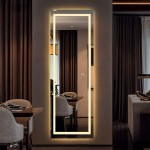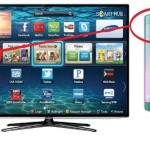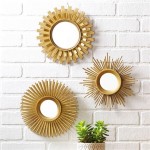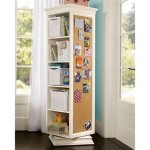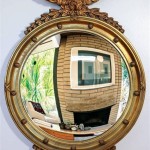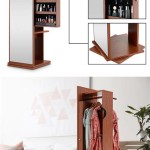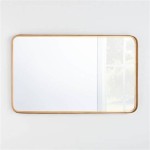```html
Hanging A Mirror Without Nails: Alternative Methods and Best Practices
Hanging a mirror can significantly enhance the aesthetics of a room, reflecting light and creating an illusion of expanded space. Traditionally, this process involves nails, screws, or other hardware that require drilling into walls. However, for renters, individuals seeking to avoid wall damage, or those simply preferring a less invasive approach, several alternative methods exist. This article outlines various techniques for hanging a mirror without nails, detailing their pros, cons, and suitability for different mirror sizes and wall types.
Before commencing any hanging project, it is crucial to assess the weight of the mirror. This is paramount in selecting an appropriate adhesive or hanging mechanism. Manufacturers often provide weight specifications on the packaging or product description. If this information is unavailable, use a bathroom scale. Weigh yourself, then weigh yourself holding the mirror. The difference represents the mirror's weight. Overestimation is preferable to underestimation to ensure a secure and lasting hold.
The type of wall surface also significantly impacts the choice of hanging method. Smooth, clean surfaces like painted drywall or sealed wood provide the best adhesion. Textured walls, such as those with stucco or heavily patterned wallpaper, may require additional preparation or a different approach altogether. Porous surfaces, like unpainted plaster or brick, may also pose challenges for adhesives. Always clean the wall surface with isopropyl alcohol and allow it to dry completely before applying any adhesive product.
Utilizing Adhesive Strips and Tapes
Adhesive strips and tapes are among the most readily available and user-friendly alternatives to nails. These products are designed with strong adhesive on both sides, allowing them to adhere to both the wall and the back of the mirror. The weight capacity of adhesive strips varies significantly, so it is essential to choose a product specifically rated for the weight of the mirror. Brands like Command strips are well-known and offer a range of weight limits.
When using adhesive strips, carefully follow the manufacturer's instructions. Typically, this involves cleaning the wall surface, applying the strips to the back of the mirror, pressing firmly for the recommended duration (often 30 seconds), and then attaching the mirror to the wall, again applying consistent pressure. Distribute the strips evenly across the back of the mirror, paying particular attention to the corners, which bear the most stress. Avoid using the strips in humid environments like bathrooms unless the product is specifically designed for such conditions.
The primary advantage of adhesive strips is their ease of use and relatively clean removal. However, it is crucial to remove them slowly and carefully, following the manufacturer's instructions to avoid damaging the wall. Some adhesive strips require pulling a tab parallel to the wall to release their grip. Improper removal can result in paint peeling or even damage to the drywall. Furthermore, adhesive strips may not be suitable for very heavy mirrors or textured walls.
Double-sided tape represents another option within the adhesive category. Similar to strips, double-sided tape offers varying degrees of strength. Consider selecting a high-strength, acrylic-based tape for optimal adhesion. These tapes often provide a more aggressive bond compared to standard double-sided tapes. Apply multiple strips of tape across the back of the mirror, ensuring even distribution and sufficient coverage for the mirror's weight. The same precautions regarding wall cleanliness and pressure application apply to double-sided tape as with adhesive strips.
For heavier mirrors, consider using a combination of adhesive strips or tape with a mechanical support system. This could involve a ledge or shelf placed beneath the mirror to bear a portion of the weight, reducing the stress on the adhesive. The ledge should be sturdy and securely attached to the wall, ideally using screws into wall studs for maximum stability. This approach provides an added layer of security and reduces the risk of the mirror detaching from the wall.
Employing Liquid Nails and Construction Adhesives
Liquid Nails and other construction adhesives offer a more permanent solution for hanging a mirror without nails. These adhesives are significantly stronger than adhesive strips or tapes and are designed to create a robust bond between two surfaces. However, their strength also means that removal can be more challenging and may result in damage to the wall. This method is generally recommended for homeowners who do not anticipate needing to relocate the mirror frequently.
When using construction adhesives, it is crucial to select a product that is compatible with both the mirror backing and the wall surface. Read the product label carefully to ensure it is suitable for these materials. Apply the adhesive in a zig-zag pattern or in vertical beads across the back of the mirror. Avoid applying adhesive to the very edges of the mirror to prevent squeeze-out when pressing it against the wall. Press the mirror firmly against the wall and hold it in place for the time specified by the manufacturer, typically several minutes.
To provide additional support while the adhesive cures, consider using painter's tape to hold the mirror in place. Apply strips of tape across the mirror and onto the wall, creating a temporary framework to prevent slippage. Leave the tape in place for at least 24 hours, or as recommended by the adhesive manufacturer. Once the adhesive has fully cured, the tape can be removed carefully.
Proper ventilation is essential when working with construction adhesives, as they often release fumes. Open windows and doors to ensure adequate airflow. Wear gloves to protect your hands from the adhesive. Clean up any excess adhesive immediately with a damp cloth. If the adhesive comes into contact with skin, wash thoroughly with soap and water.
The removal of mirrors attached with construction adhesives is a delicate process. Attempting to simply pull the mirror off the wall will likely result in significant damage. Instead, use a thin wire or piano wire to carefully slice through the adhesive bond. Start at the top of the mirror and slowly work your way down, sawing back and forth to sever the adhesive. Once the mirror is removed, residual adhesive can be scraped off the wall with a putty knife. Be prepared to repair and repaint the wall after removing the mirror.
Exploring Alternative Hanging Systems and Hardware
Beyond adhesives, alternative hanging systems offer a non-invasive approach that avoids both nails and direct adhesion to the mirror. These systems often involve specialized hardware that distributes the weight of the mirror across a larger area of the wall.
One such system utilizes a French cleat. A French cleat consists of two interlocking pieces of wood or metal with angled edges. One piece is attached horizontally to the wall using screws anchored into wall studs, while the other piece is attached to the back of the mirror. The angled edges interlock, allowing the mirror to hang securely on the wall. This system provides a strong and stable support, capable of holding heavier mirrors. While it requires screws to attach the cleat to the wall, the weight is distributed and the mirror itself is not directly impacted.
Another option is using a wire hanging system that relies on tension. With this method, a strong wire is attached to the back of the mirror (using D-rings and screws attached to the mirror frame) and stretched taut across the back. The wire then hooks onto a picture hanging hook that is carefully hammered into the wall, creating a secure hold through tension. The picture hanging hook should be rated for the mirror's weight, and this method works best with mirrors that already have a sturdy frame to attach the necessary hardware.
Consider display ledges or shelves. These provide a surface to rest the mirror on and, while requiring screws to install the ledge or shelf, keep the mirror itself free from direct permanent wall contact. The shelf should be wide enough to accommodate the mirror's depth and be securely mounted to the wall studs for adequate support.
Finally, suction cups can be useful for hanging mirrors in specific situations, like on smooth, non-porous surfaces such as tile or glass. It’s critical to use high-quality suction cups rated for the mirror's weight, and regularly check and re-adhere the suction cups to ensure they maintain their grip. This method is best suited for lightweight mirrors and is not recommended for permanent installations or high-traffic areas.
```
3 Simple Ways To Hang A Mirror On Wall Without Nails Wikihow

How To Hang A Heavy Mirror In 5 Simple Steps

3 Formas De Pendurar Um Espelho Na Parede Sem Pregos

How To Hang A Mirror On Wall Without Nails Guide For All Diyers

How To Hang A Mirror On Wall Without Nails

Hanging Up Mirror Without Nails Tiktok Search

How To Hang A Heavy Mirror Without Nails Worst Room

3 Simple Ways To Hang A Mirror On Wall Without Nails Wikihow

How To Hang A Heavy Mirror Without Nails Worst Room

How To Hang A Heavy Mirror At Home
